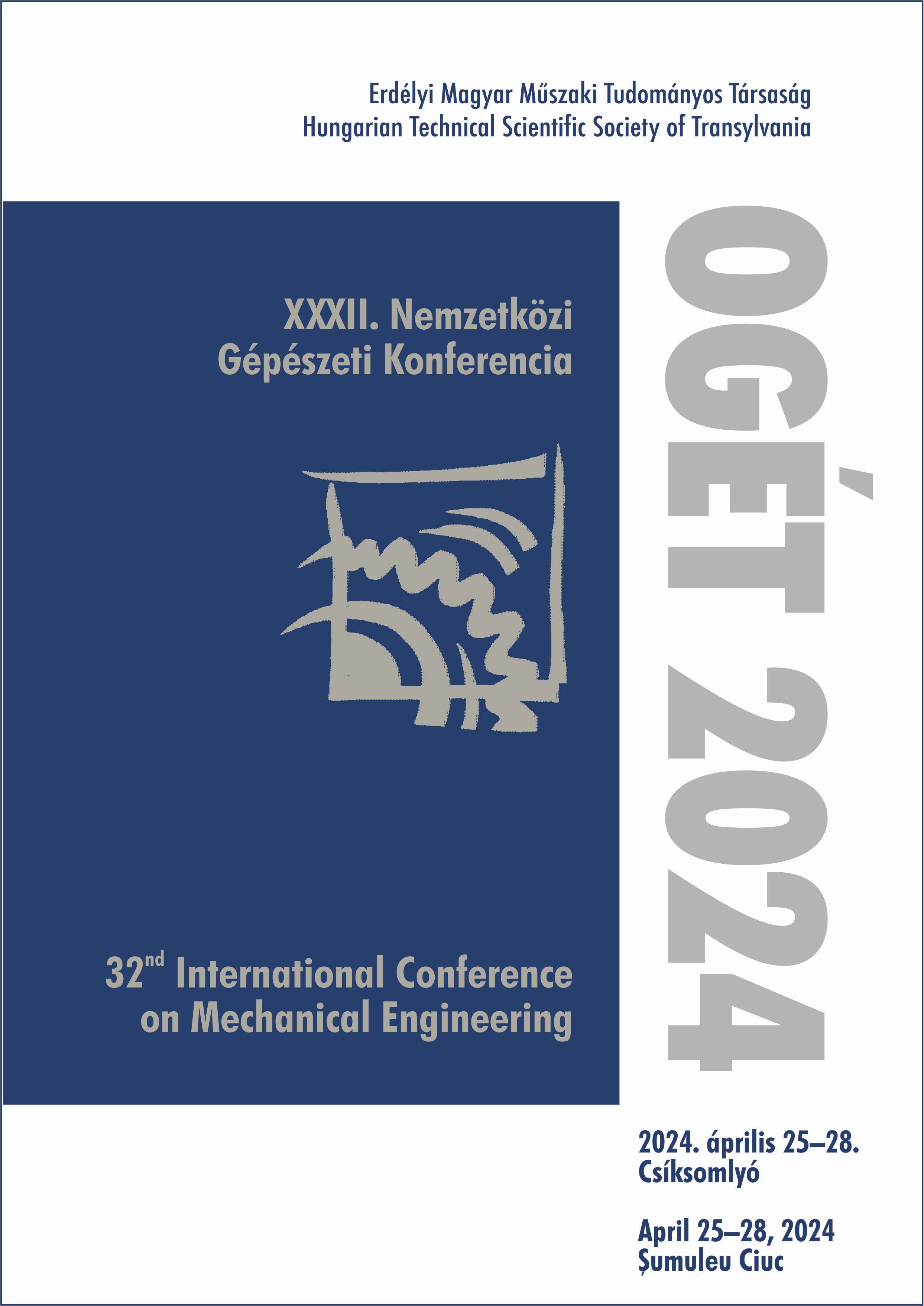Forgácsolásindukált rétegközi sorja kísérleti vizsgálata Al/CFRP szendvicsszerkezetekben
Experimental investigation of machining-induced interlayer burr in Al/CFRP sandwich structures
Keywords:
Drilling, Sandwich structure, Burr, Burr height, Burr thickness, /, Fúrás, Szendvicsszerkezet, Sorja, Sorjamagasság, SorjavastagságAbstract
Metal and fiber-reinforced polymer composite sandwich structures have significantly different machinability properties. Different cutting mechanisms occur at the same time between the layers, which is causes cutting failure phenomena (delamination, burr formation). The main goal of our research is to investigate the effect of the technological parameters and the axial cutting force component on the geometric characteristics of the interlayer burr. The effect of feed and cutting speed on the maximum burr height and burr thickness was investigated using analysis of variance (ANOVA). The ANOVA results show that the feed has a significant effect on the axial cutting force component. However, the maximum burr height and burr thickness are not significantly affected by feed, cutting speed, or the axial cutting force component. The results suggest that the interlayer burr can only be influenced to a small extent by varying the process parameters.
Kivonat
A fém és szálerősített polimer kompozit alkotta szendvicsszerkezetek eltérő forgácsolhatósági tulajdonsága miatt a rétegközben (két lemez találkozásánál) különböző forgácsolómechanizmusok jelentkeznek egyidőben, ezért itt több forgácsolásindukált hibajelenség (delamináció, sorjaképződés) is felmerülhet. A kutatásunk fő célja a technológiai paraméterek és a tengely irányú fogácsoló erőkomponens hatásának vizsgálata a rétegközi sorja geometriai jellemzőire. Az előtolás és a forgácsolási sebesség hatását vizsgáltuk a maximális sorjamagasságra és a sorjavastagságra varianciaanalízis (ANOVA) segítségével. Az ANOVA eredmények azt mutatják, hogy az előtolásnak szignifikáns a hatása a tengely irányú forgácsolási erőkomponensre. A maximális sorjamagasságra és a sorjavastagságra azonban nincs szignifikáns hatással sem az előtolás, a forgácsolási sebesség, sem a tengely irányú forgácsolási erőkomponens. Az eredmények azt sejtetik, hogy a rétegközi sorja csak kis mértékben befolyásolható a folyamatparaméterek variálásával.
References
L. Kala Koyyagura, P. Rao Karanam, Influence of cutting conditions in drilling of CFRP/Al stacked composites, 2021.
J. Liang, Y. He, Study on the evolution and suppression strategy of the interlayer gap in the drilling of CFRP/Al stacked materials, J Manuf Process, 2023, 92, 329–337.
A. Abdelhafeez Hassan, S. L. Soo, D. K. Aspinwall, D. Arnold, A. Dowson, An analytical model to predict interlayer burr size following drilling of CFRP-metallic stack assemblies, CIRP Annals, 2020, 69, 109–112.
J. Xu, M. El Mansori, Experimental study on drilling mechanisms and strategies of hybrid CFRP/Ti stacks, Compos Struct, 2016, 157, 461–482.
Z. Jia, C. Chen, F. Wang, C. Zhang, Q. Wang, Analytical model for delamination of CFRP during drilling of CFRP/metal stacks, The International Journal of Advanced Manufacturing Technology, 2020, 106, 5099-5109.
Dornfeld D., Min S., A Review of Burr Formation in Machining, Burrs - Analysis, Control and Removal, Springer, 2010, 3–11.
K. Sridhar, G. Bolar, N.H. Padmaraj, Comprehensive experimental investigation on drilling multi-material carbon fiber reinforced aluminium laminates, 2022, 34, 391-401.


